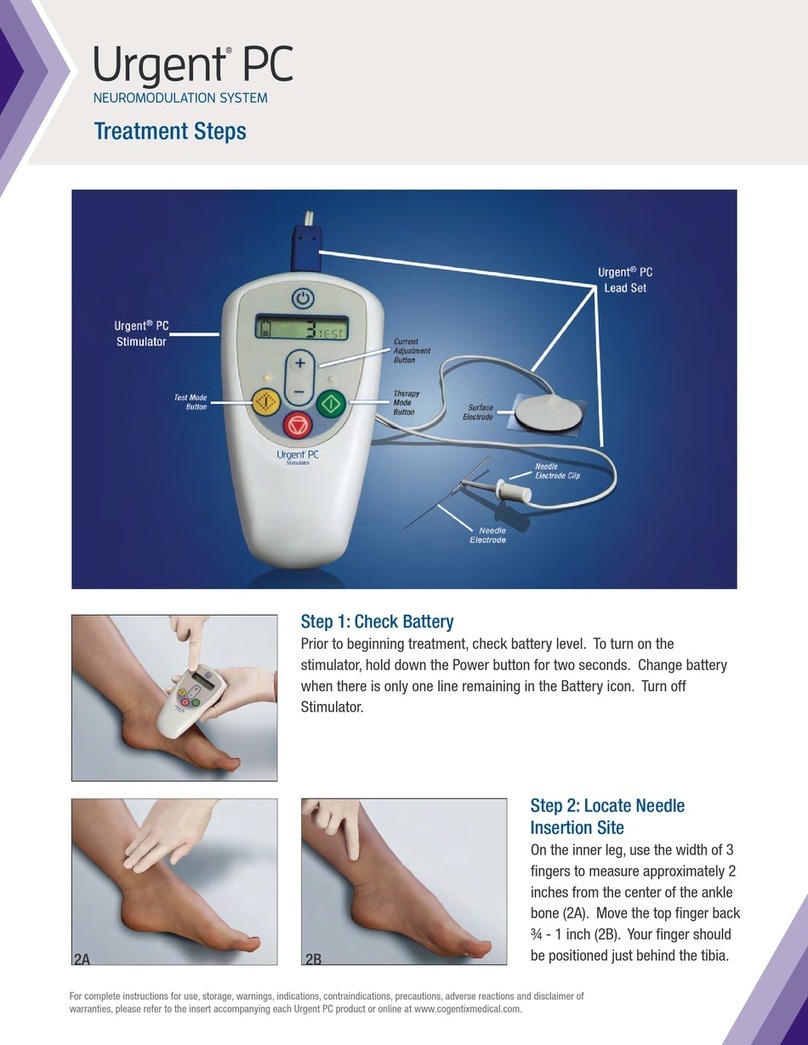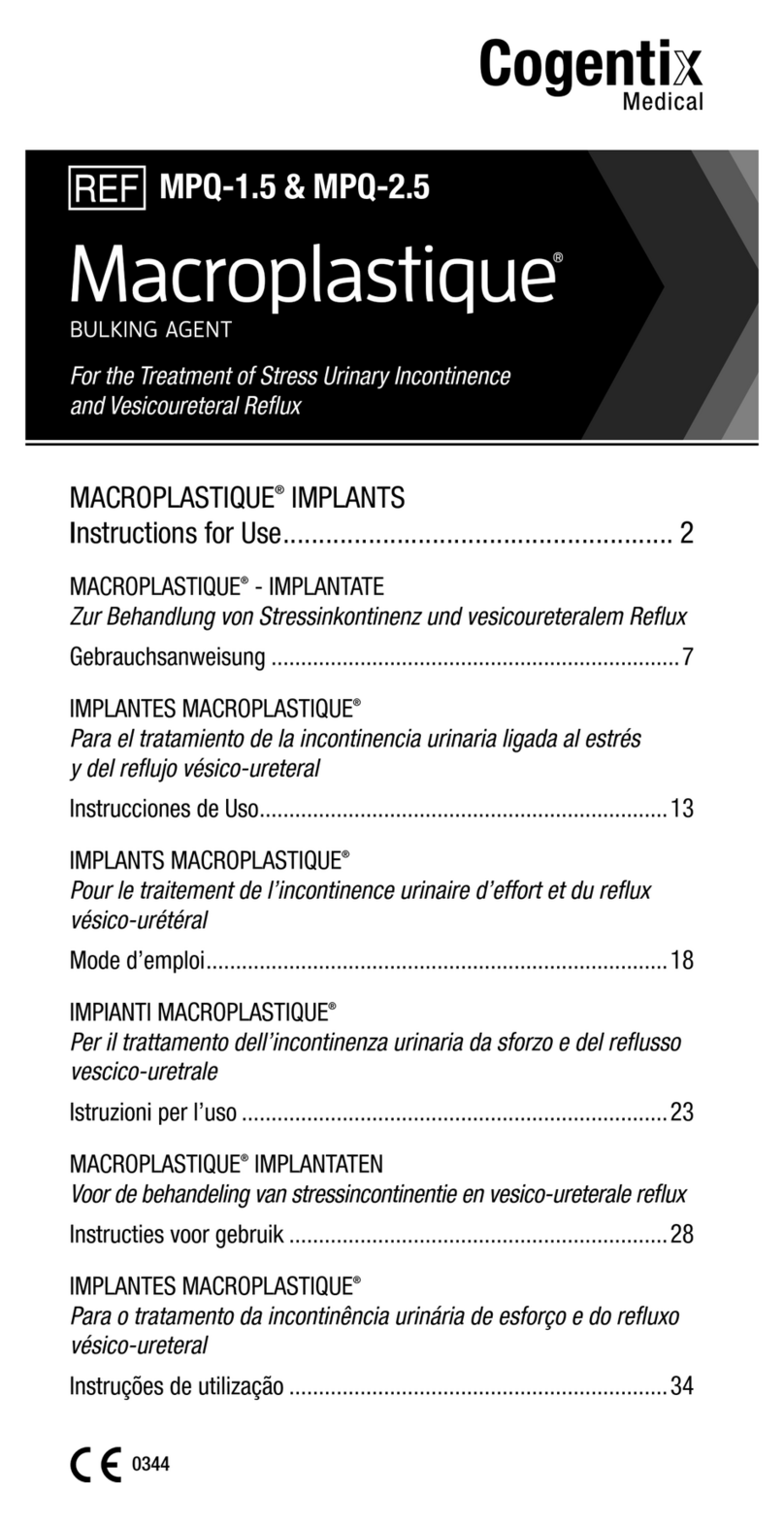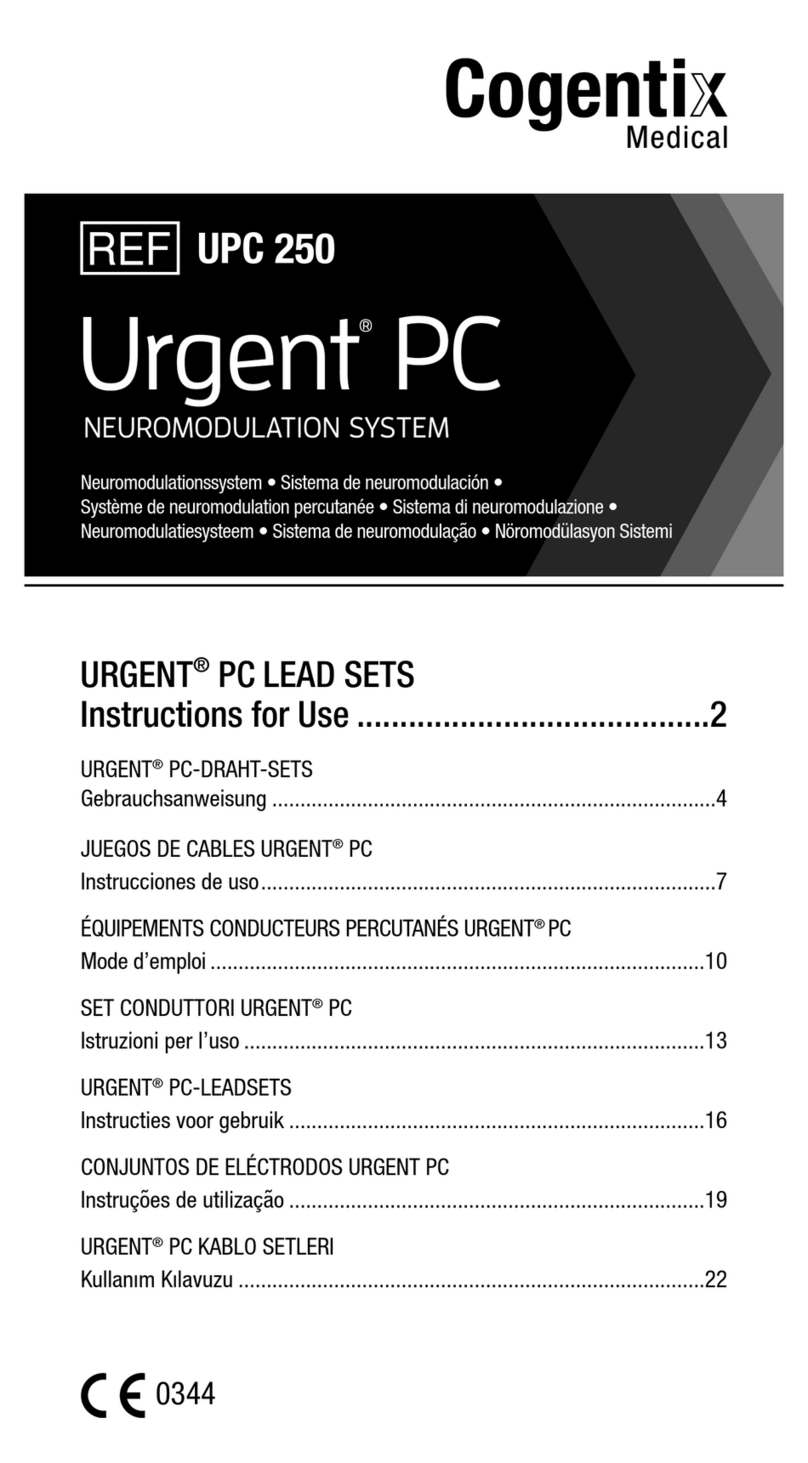English
67
WARNINGS
1. This Instructions for Use is NOT a comprehensive reference to
therapeutic techniques for the treatment indications noted for the
Urgent PC.
2. Users should be familiar with appropriate application and techniques
involved in the use of the Stimulator and the Lead Set.
3. Do not use the Stimulator in or around water.
4. Do not use the Stimulator or Lead Set if the skin in the area of use
is inamed, infected, or otherwise compromised. Monitor patients
during treatment for pain or skin irritation/inammation. Discontinue
use of the Stimulator if the patient complains about these symptoms
or any other discomfort.
5. Do not open battery cover while Stimulator is powered on or
connected to the patient.
6. Patients should not spend more than 30 minutes in Therapy mode
during a single treatment session.
7. The patient should remain comfortably seated, or in a supine
position, for the duration of the treatment. The patient should not rise
or walk until the treatment is complete, as mobility during treatment
has not been assessed.
8. Do not use any Lead Set component (Lead Wire, Needle Electrode
or Alcohol Pad) if the component is damaged.
9. Do not use the Needle Electrode or the Alcohol Pad if the packaging
for either component has been opened or damaged.
10. Do not reuse the single-use Needle Electrode, Surface Electrode, or
Lead Wire.
11. Dispose of used Lead Set components in a bio-hazardous material
disposal container.
12. Remove battery if equipment is not likely to be used for some time.
13. Simultaneous connection of a patient to high frequency surgical
equipment may result in burns at the site of the Stimulator electrodes
and possible damage to the Stimulator.
14. Device operation in close proximity (e.g., 1 meter) to short wave
or microwave therapy equipment may produce instability in the
Stimulator output.
15. The application of the electrodes near the thorax may increase the
risk of cardiac brillation.
16. Do not apply stimulation across or through the head, directly on the
eyes, covering the mouth, on the front of the neck (especially the
carotid sinus), chest, upper back or crossing over the heart.
17. The Stimulator has electric shock protection, Type “Internally
Powered Equipment.”
18. The Stimulator enclosure is type IPX0 and does not protect against
the ingress of water.
19. Unauthorized modication of this equipment may cause injury to
either the patient or the device operator.
PRECAUTIONS
1. Prior to using the Urgent®PC Neuromodulation System, read and
understand all instructions in the Urgent PC Stimulator Instructions for
Use and Urgent PC Lead Set Instructions for Use.
2. Caution should be used for patients with suspected or diagnosed
heart problems, especially those relating to the pacing or electrical
functioning of the heart.
3. The following are potential health risks associated with this type of
device and therapy:
» Discomfort and pain (including throbbing pain) at, or near, the
stimulation site, including the patient’s lower leg and foot
» Bleeding at the needle site
» Redness/inflammation at, or near, the stimulation site
» Potential for peripheral nerve damage
» Numbness of toes
» Stomach ache
4. Medical electrical equipment needs special precautions regarding
electromagnetic compatibility (EMC) and needs to be installed
and placed into service according to EMC guidelines provided
(see page 18 for more information).
a. Portable and mobile radio frequency (RF) communications
equipment can affect medical electrical equipment.
b. The end user of this product should assure it is used in an
appropriate environment.
i. Portable and mobile RF Communications equipment
(i.e., cell phones) should not be used at close distances.
ii. Power frequency magnetic elds should be at levels
characteristic of a typical commercial, hospital or clinic
environment.






























